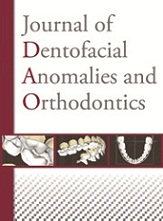No CrossRef data available.
Article contents
Influence of the thickness of cortical bone on the stability of orthodontic miniscrews
Published online by Cambridge University Press: 14 February 2014
Abstract
Three 10-mm-long miniscrews commonly employed in orthodontic treatment were compared in four different situations involving diverse thicknesses of cortical bone. The finite element method (FEM) was used in the study, in which a force of 250 g was applied in two directions: perpendicular and parallel to the bone surface. As the parameter under study was the thickness of cortical bone, simulations were performed in four different bone loss situations: 2.5, 2, 1.5 and 1 mm. Our aim was also to quantify the stresses and displacements generated when applying a force of 250 g perpendicular and parallel to the bone surface under the same skeletal conditions. The results reveal similar performance in the three analysed samples, with increased stresses and displacements in the surrounding bone in relation to similar variations in the thickness of cortical bone.
- Type
- Research Article
- Information
- Copyright
- © RODF / EDP Sciences




